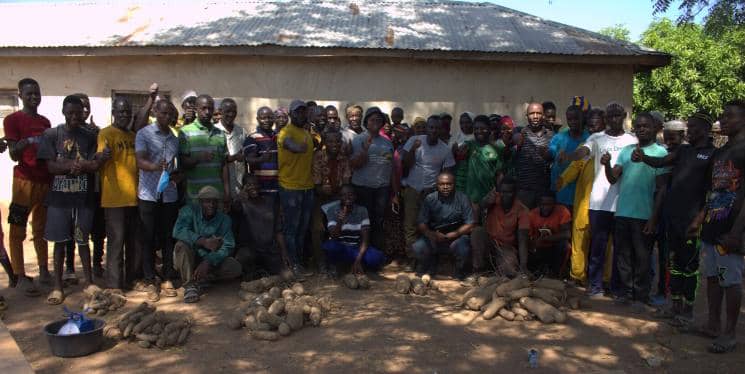[ad_1]

Kpamyo, an improved yam variety engineered by the Council for Scientific and Industrial Research – Savanna Agricultural Research Institute (CSIR-SARI), has proven more yields than local varieties during demonstration trials.
Seeds of the improved variety, which weighed between 40 to 70 grams, produced tubers that weighed 3.5 kilogrammes, as against the local variety that weighed 300 to 700 grams at the time of planting.
The comparison was done on harvest days in communities where the variety was planted on demonstration trials.
The demonstration trials were established by CSIR-SARI and the International Institute of Tropical Agriculture (IITA) under the Programme for Seed Systems Innovations for Vegetatively propagated Crops in Africa (PROSSIVA) project funded by the Bill and Melinda Gates Foundation.
It was to showcase the benefits of planting clean seeds of improved yam varieties to farmers across 13 yam production communities in Northern and Savannah Regions.
Mr Nchisani Gade, a farmer, who testified about the improved variety, said he was skeptical at the fact that the 40 to 70-gram seeds of the improved variety could yield 3.5kg tubers on his farm.
He said typically, he would discard seeds of such small sizes during planting, adding that Kpamyo was different from local varieties.
Dr Kwabena Darkwa, Research Scientist at CSIR-SARI said the seed of the improved variety was produced from tissue culture plantlets that were certified as virus free and propagated using the leaf bud cuttings technique, hence the smallest seed yam was potent to produce vigorous plants with high yield.
He said the high ratio propagation technique resulted in up to 500 clean seed yams per year from a single plant, making it more efficient with the added advantage of higher germination percentage and enhanced yield.
Dr Daniel Aihebhoria, a Seed Scientist and Agronomist at IITA, said the improved yam variety yielded more due to its agronomic efficiency as compared to the local variety.
He explained that the clean seed of the improved variety had the potency to multiply itself by up to 60 times whereas seed of the local variety could replicate itself by six times.
Source: GNA
[ad_2]
Source link
